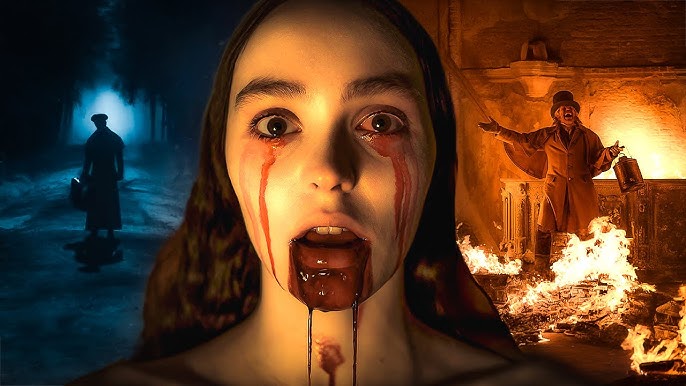We often hear the phrase “cult film” or “cult actor”, and nowadays more and more TV stations advertise “cult series”. Far from all films or series should be called cult. The term became more common in the late 1960s, but even now there is still no precise academic formulation of the phenomenon.
Wikipedia gives the following definition:
Cult films are generally films (or TV series) that have a large fan base that considers the film to be one of the best films ever made, and that fan base does not diminish with time and with the age of the film itself.
Cult films usually push the boundaries of cinema in one way or another: they offer a new genre, theme or way of developing the action, or they are more violent or sexually or otherwise explicit than previous films (showing things that have not been shown before), or they use a new kind of filming or special effects, etc…
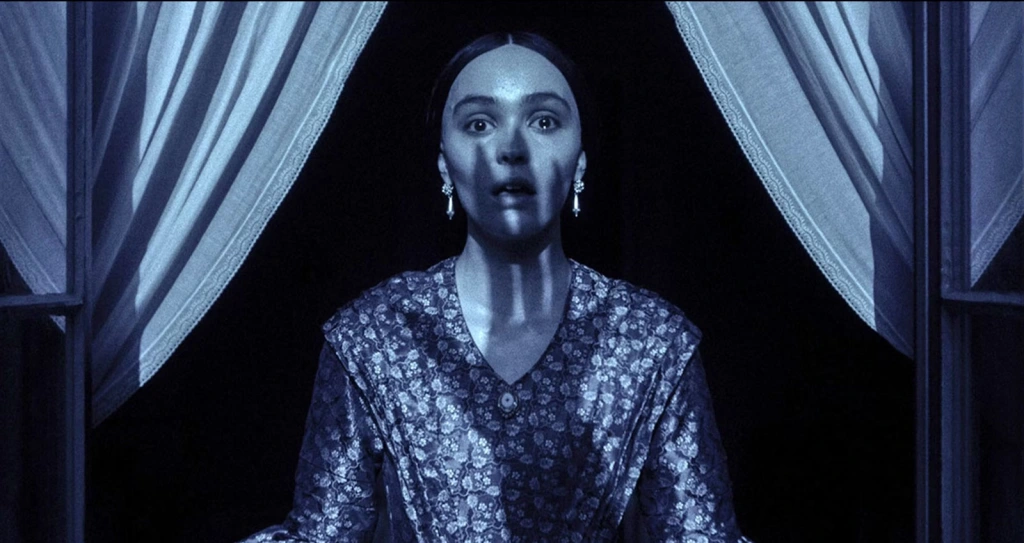
10. “Nosferatu” (2024)
Do you need to see to believe, or believe to see? Over time, the world has divided into two opposing sides – one rational and pragmatic, the other mystical and dreamy. One side believed that the world is ruled by an invisible supreme force, while the other, relying on science, thought they knew the whole truth about the world’s structure – if you can’t see it, it doesn’t exist. These two sides have clashed repeatedly, each firmly convinced of their own righteousness.
In Robert Eggers’ 2024 film “Nosferatu”, there is no doubt about who is right – Germany is overrun by a plague, a demon, the dark lord vampire Nosferatu, also known as Count Dracula, referred to in the film as Orlok. “Nosferatu” in ancient Romanian means “vampire.”
The film has a long history. In 1897, writer Bram Stoker wrote the Gothic horror novel “Dracula”, which told the story of the ancient vampire Count Dracula trying to corrupt all of England. Later in 1922, director F.W. Murnau created a cinematic masterpiece inspired by the book called “Nosferatu”, where lead actor Max Schreck, with his pale skin, fear of sunlight, hollow eyes and other vampiric traits, was rumored to be a real vampire. The film’s events took place in the fictional German town of Wisborg. The 1922 “Nosferatu” became famous for its innovative cinematography, using light and shadow to create terror, while its themes reflected Germany’s post-WWI horrors.
Eggers’ “Nosferatu” continues Murnau’s traditions. The 2024 film also fits the Gothic genre, filled with horror elements like possession, exorcism, death and blood-drinking, but its most terrifying aspect is its oppressive, dark and eerie atmosphere. Yet the world on screen looks like a romantic painting – moonlit skies, snow-covered rooftops, grand castles and snowy mountain paths – so precisely aesthetic that it feels as if Nosferatu himself crafted it using his supernatural dark powers. Like the 1922 film, the director creates horror and beauty through light and shadow.
A key element of the modern world is maintained – reason battles emotion, science clashes with mysticism. Everything we see on screen can be interpreted through rational lenses. In the film, businessman Friedrich Harding (Aaron Taylor-Johnson) dismisses supernatural forces, attributing his wife’s suffering to plague rather than a vampire’s bite, and his family friend Elena Hutter’s (Lily-Rose Depp) torment to simple melancholy or, in modern terms, epilepsy and depression, treatable by bloodletting.
The story unfolds in 1838, during the rise of Romanticism. Before Romanticism came the Age of Enlightenment, where science replaced religion as the West’s guiding force. But soon, Romanticism took root, resisting scientific dominance and reintroducing mysticism. Nosferatu embodies Romanticism’s assertion that the world extends far beyond what we can see.
Count Orlok, residing in northern Germany’s mountains, surrounded by superstitious gypsies who stake corpses, decides he no longer wants to endure ancient customs and longs to move into the modern world. Above all, he is drawn to the scent of young Elena Hutter.
However, Elena Hutter has a husband who stands in the Count’s way. Nosferatu lures Thomas Hutter (Nicholas Hoult) to his castle, drinks his blood and binds him to his shadow, meaning Thomas is under the Count’s control. Meanwhile, Elena, though distant, senses the Count’s presence, experiencing nightly horrors where she communes with the beyond – for the Count is a demon.
The events escalate when Nosferatu boards a ship and sails to Wisborg to conquer Elena’s heart, naturally through unconventional means. Meanwhile, Thomas, freed from the castle, rushes to Wisborg to save his wife. Between Thomas and Elena lies pure, sincere love, but the beautiful woman has her own secrets… (Dora Žibaitė)
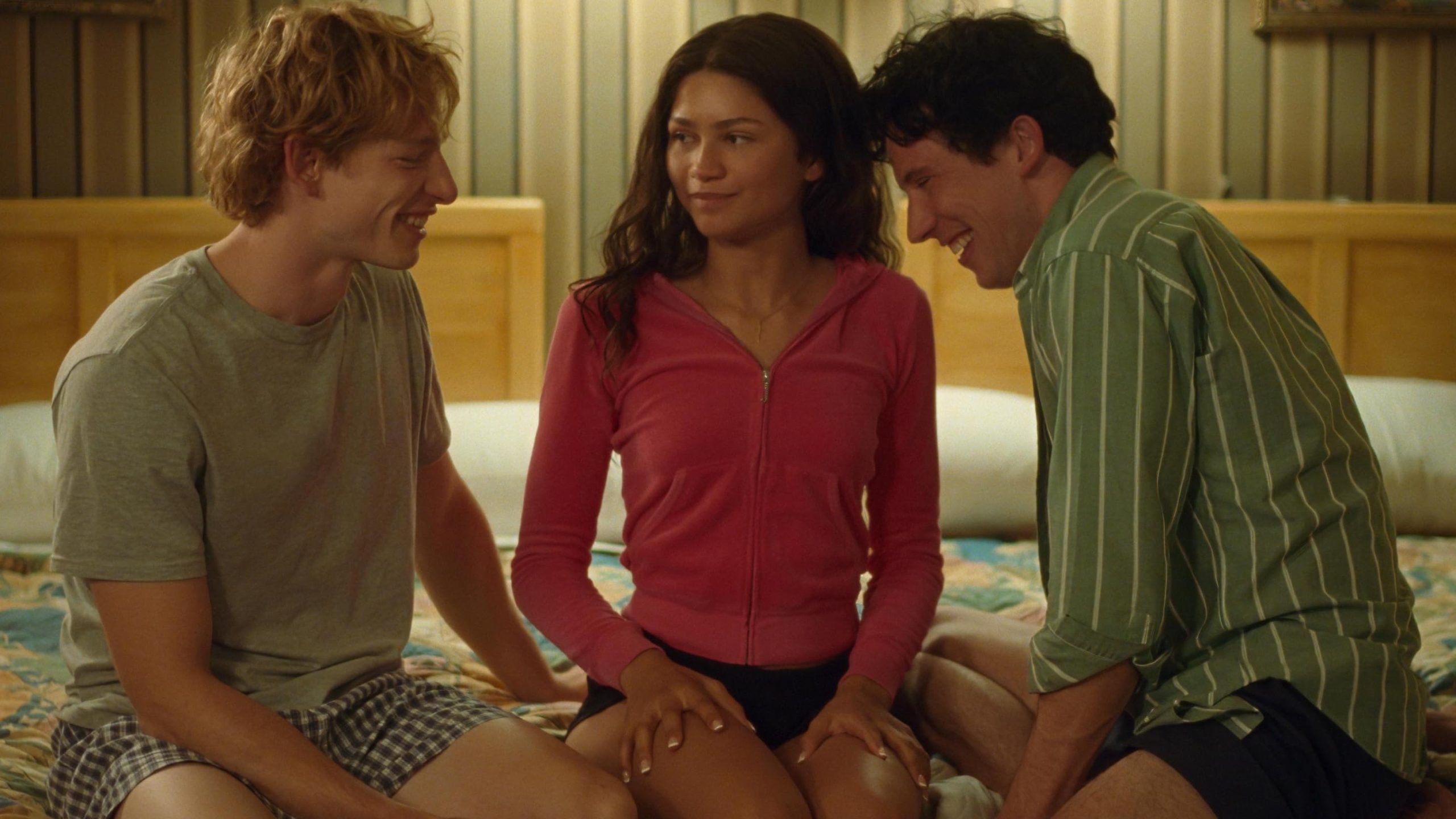
9. “CHALLENGERS” (2024)
Italian director Luca Guadagnino already has at least one cult film in his repertoire – “Call Me by Your Name” (2017). It’s entirely possible that his recent erotic drama “Queer” (2024, based on William S. Burroughs), shown at the “Cinema Spring” festival, will become the second, but only time and fan reactions will confirm or deny this.
Meanwhile, “Challengers” (2024), which briefly graced our screens, doesn’t seem to aim for such heights (for now), though cinema has seen films gain massive popularity after lukewarm premieres. We’ll wait and see.
Different sports attract different-sized audiences. The most popular trio is likely football, basketball and tennis. Personally, when flipping through sports channels, I often land on broadcasts of these three.
Tennis courts also simmer with passion, and they frequently serve as backdrops for various film plots. In Woody Allen’s “Match Point” (2005), a tennis court sparks a torrid affair leading to murder. The comedy “Battle of the Sexes” (2017) revisits the legendary match between champion Bobby Riggs (Steve Carell) and top female player Billie Jean King (Emma Stone), who protested the eightfold disparity in prize money between men’s and women’s tournaments.
Luca Guadagnino’s “Challengers” (2024) is no exception. Here, best friends Art Donaldson (Mike Faist) and Patrick Zweig (Josh O’Connor) navigate their complicated relationship both on and off the court. As teens, they met Tashi (Zendaya), a rising tennis star, while their own careers seemed uncertain. Constantly in the same orbit, the trio becomes entangled in a love triangle that ends when Tashi chooses Patrick. Their friendship shatters, and after a career-ending injury, Tashi begins coaching Art, whose rise to the tennis Olympus and life with his ex-girlfriend is watched from afar by Patrick.
When their paths cross again, long-buried feelings, passions, hopes and resentments inevitably resurface. What is each willing to sacrifice for victory?
The filmmakers avoid cheap sentimentality, but adrenaline and tension abound. These ingredients create a spectacle that could well become another cult classic. (Gediminas Jankauskas)

8. “SISU” (2023)
Filmmakers have long joked about WWII themes. Sometimes directors get so carried away they dare to rewrite obvious historical facts with “alternative histories.” The most famous example is Quentin Tarantino’s “Inglourious Basterds” (2009), where after an hour and a half of extreme gameplay with WWII themes, viewers are treated to a Hollywood-style demise of the Third Reich’s leadership, including Hitler himself, in a fiery Parisian cinema.
Finnish filmmakers went even further. Director Timo Vuorensola’s sci-fi action-comedy “Iron Sky” (2012) ventured into space, imagining Nazis fleeing to the moon’s dark side after losing WWII.
Another champion of boundless imagination is Norwegian director Tommy Wirkola’s “Dead Snow” (2009), where a group of extreme sports enthusiasts encounters Nazi zombies during an Easter trip to the mountains. The absurd, kitschy plot was so popular it spawned a sequel, “Dead Snow 2” (2014).
Finnish director Jalmari Helander follows a similar path with “Sisu” (2022), reimagining events in 1944 when undefeated Finns chased German occupiers from Lapland.
The film’s action unfolds in Lapland. Sensing their impending defeat, the Nazis frantically flee to Norway, wreaking havoc on Finland – looting, murdering and destroying entire villages.
In these parts, a lone man, Atami Korpi (Jorma Tommila), patiently works his trade – prospecting for gold. He was left alone after his entire family perished. Now, his only companions are a loyal dog and a horse.
One day, his luck changes – he finds a significant amount of gold nuggets. But while transporting his haul to town, he encounters Nazis. The fascists, of course, try to steal the gold, only to realize too late whom they’re dealing with.
Atami is no ordinary hunter – he’s a legendary warrior who killed over three hundred Russian occupiers during the Winter War, earning him the nickname “Koschei” (The Immortal) from Stalin’s troops.
From this moment, a breathless one-man war against well-armed SS troops begins, with the fearless hunter dispatching them in creative and spectacular fashion.
Helander conceived this film during the COVID-19 pandemic after his planned sci-fi comedy “Jerry and Miss Universe” in Canada fell through. Not wanting to sit idle, he devised an action film with a hero akin to John Rambo, Mad Max and John Wick. But “Sisu” also has a real-life prototype – legendary Finnish sniper Simo Häyhä, who allegedly killed over five hundred Russian soldiers during the war.
The lead role is played by actor Jorma Tommila, who also happens to be the director’s brother-in-law and appears in all of Helander’s films. (G.J.)

7. “NO HARD FEELINGS” (2023)
“No Hard Feelings” – a springtime, slightly vulgar and delightfully unpretentious R16 comedy by director Gene Stupnitsky – will make every comedy lover laugh, and then some.
The film’s protagonist, Maddie (Jennifer Lawrence), is a carefree Uber driver and bartender at a local joint. Burdened by debt, she not only loses her car – a key source of income – but risks losing her mother’s inherited house, which she’s desperate to keep. Living in the resort town of Montauk, New York, she bitterly criticizes the wealthy vacationers who drive up property taxes in her hometown.
Desperate for quick cash to buy a car and save her home, she stumbles upon an online ad: wealthy parents Alison (Laura Benanti) and Laird (Matthew Broderick) seek a woman to help their introverted son Percy (Andrew Barth Feldman) “come out of his shell” before he leaves for Princeton. In exchange, they offer a Buick Regal in good condition. Skeptical but intrigued, Maddie applies – despite being slightly older than requested – and lands the job.
Interestingly, the film was inspired by a real ad sent to Stupnitsky by a colleague four years prior. “No Hard Feelings” isn’t long (1h 43m), but it packs a punch. It weaves together multiple themes: overprotective parents meddling in their kids’ lives, Gen Z’s screen addiction, and generational clashes, highlighted in several scenes.
The first act is wildly unpredictable, hilarious and occasionally cringe-worthy, prompting questions like, “Why would anyone do that?” The second half shifts focus to introspection, emotional growth and confronting mistakes, balancing sentimentality with the first act’s humor. The dialogue is sharp, laced with wit and profanity. Visually, the film has a retro charm.
In recent years, theaters have been dominated by thrillers, action, horror and sci-fi, making “No Hard Feelings” a refreshing change. It’s a raucous, springtime romp perfect for unwinding and laughing out loud – no overthinking required. (Justina Danylaitė-Krivinskienė)
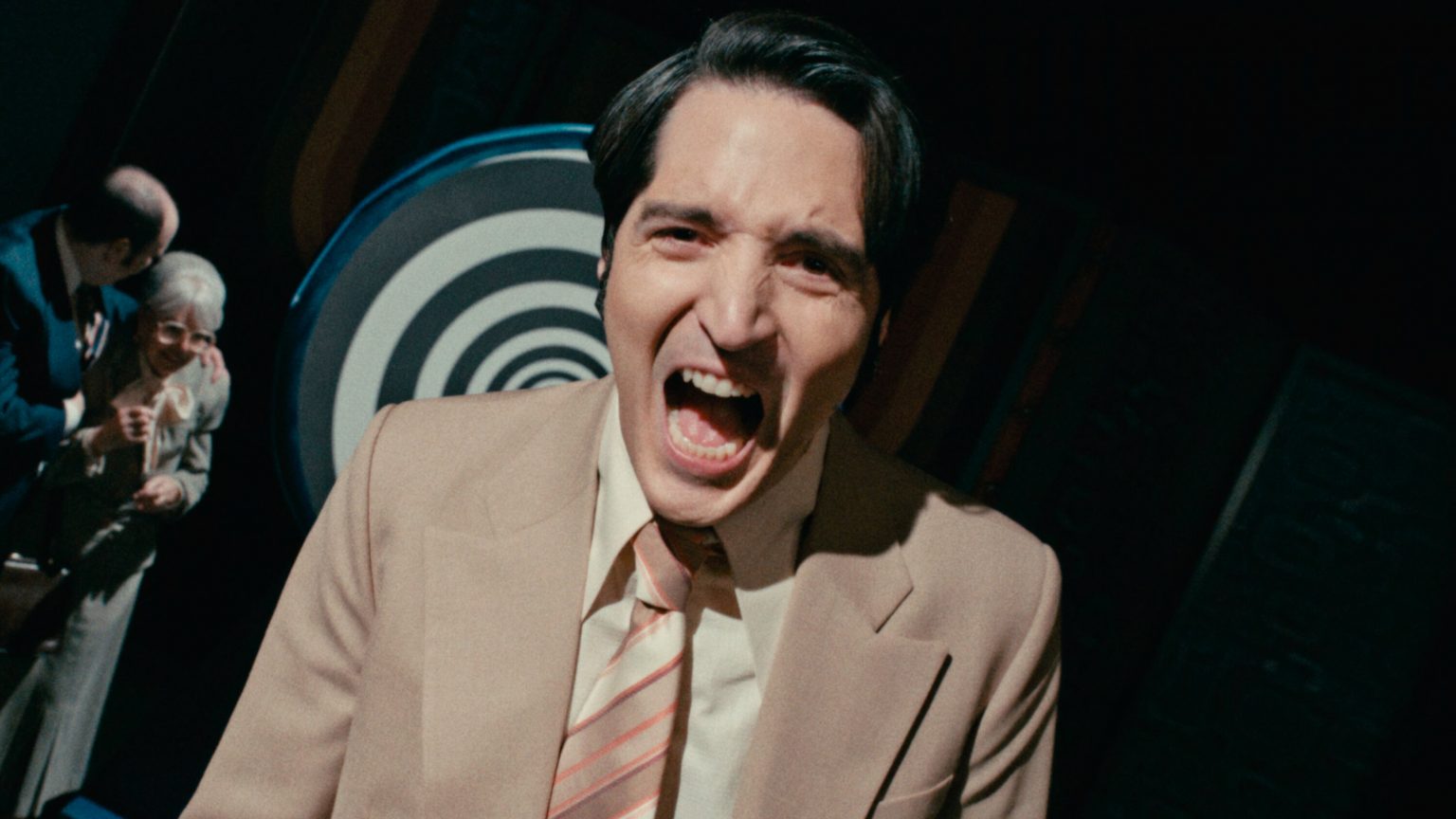
6. “LATE NIGHT WITH THE DEVIL” (2023)
The power of media and the limits of morality are central themes in “Late Night With The Devil”. Directors Cameron and Colin Cairnes craft a 1970s-style talk show to ask: How far will TV go to captivate audiences? This isn’t just horror – it’s a cautionary tale about sacrificing ethics for entertainment, with terrifying consequences.
Media’s influence is potent, shaping perceptions, swaying opinions and evoking fear or fascination. The film’s title nods to late-night staples like “Late Night With Jimmy Kimmel”, but its format mirrors 1977 – a time when audiences trusted what they saw on screen. Here, the talk show becomes a platform for manipulation, exploiting fears and supernatural intrigue.
The plot follows host Jack Delroy, who, desperate for ratings, stages a séance on air. What unfolds is a chain of terrifying, otherworldly events. Set almost entirely in the studio, the horror isn’t just supernatural – it’s the audience’s complicity in the spectacle.
The Cairnes brothers blend psychological horror with retro aesthetics, using restrained effects to maintain the era’s authenticity. Muted colors and vintage camera work immerse viewers in a “live” broadcast gone wrong. (Milena Kosilovskytė)
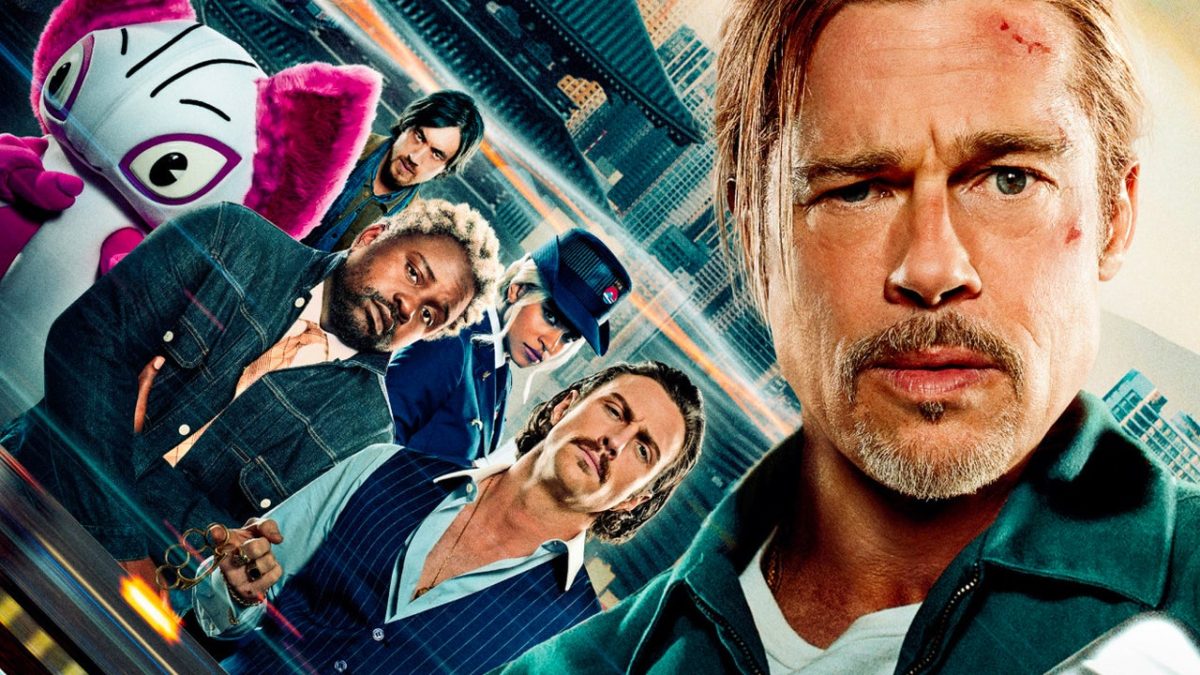
5. “BULLET TRAIN” (2022)
“Bullet Train” is a stylish action-comedy where Brad Pitt shines in the lead role. The film should appeal to fans of legendary filmmakers Guy Ritchie and Quentin Tarantino, as its style resembles works like “Lock, Stock and Two Smoking Barrels” and “Kill Bill.”
This is a traditional action film featuring a protagonist who faces dangers and adversaries during his journey. However, the movie teeters on the edge of comedy, so there are plenty of scenes that will make you laugh or at least smile. The film is based on Japanese author Kotaro Isaka’s novel, so it’s rich in Japanese cultural elements. However, the creators faced criticism for the lack of Asian actors, since most characters in the novel are Japanese.
As the title suggests, all the action takes place on a high-speed train. Though confined to one location, there’s no shortage of events. “Bullet Train”, like any good action film, features many excellent fight scenes performed flawlessly by the actors.
Brad Pitt plays the lead character teetering between success and failure, a hired assassin nicknamed “Ladybug”. He’s assisted by the clever coordinator Marie Beetle. His mission seems simple – steal a suitcase on the train. But nothing is as straightforward as it seems. The suitcase is coveted by other passengers too, and Ladybug’s journey becomes long, difficult and dangerous. Multiple assassins target him, and the suitcase sparks intense battles. By the end, the tone becomes more serious, and all questions are answered.
As mentioned earlier, “Bullet Train” shares stylistic and tonal similarities with cult films like “Kill Bill”, “Lock, Stock and Two Smoking Barrels” and even “Pulp Fiction”. All these films enliven the action and fight scenes with humor and unique dialogue between characters. The character portrayals also have similarities, especially with “Lock, Stock and Two Smoking Barrels”. For example, neither film clearly divides characters into good and bad – each has their own motivations and fights for themselves. Throughout the film, scene tones and moods vary, but ultimately form a cohesive narrative.
This story introduces many colorful characters. Typically in action films, we root for the protagonists, but “Bullet Train” offers an abundance of interesting characters. All major roles are distinctive and help drive the plot forward. (Donatas Rusinas)
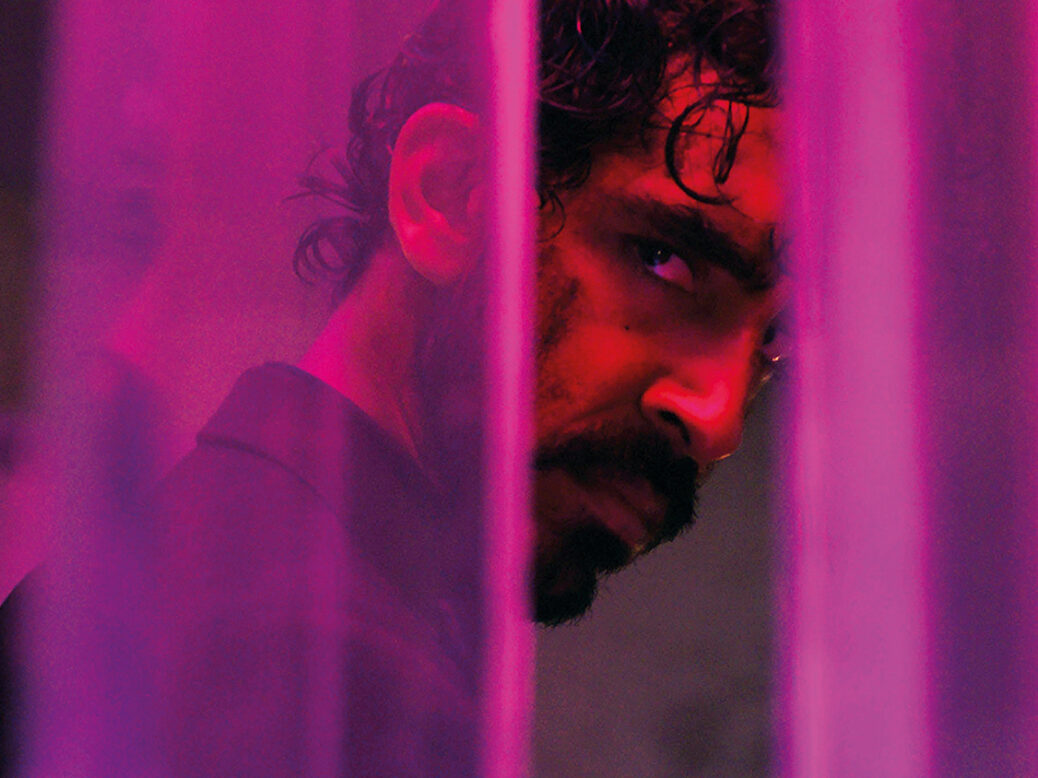
4. “MONKEY MAN” (2024)
“Monkey Man”, infused with Indian mythology and vibrant Mumbai street life, is Dev Patel’s bold directorial debut – a brutal and thrilling exploration of revenge, identity and redemption.
The film is set in a city with stark divisions between the wealthy elite and impoverished masses. Kid, played by Dev Patel himself, is a shadowy figure hiding behind a gorilla mask, drifting through the brutal world of underground fight clubs where every punch is a desperate bid for survival. After years of suppressed rage, he finds a way to infiltrate the city’s dangerous elite. Haunted by childhood trauma that resurfaces as he gets closer to his enemies, Kid begins his ruthless plan to exact vengeance on those who took everything from him.
Dev’s character Kid embodies an interesting storytelling choice that speaks volumes about his journey and the film’s themes. His name – or rather, the absence of a traditional name – plays a crucial role in understanding his character and the broader story. Kid’s anonymity serves as a metaphor for the faceless, nameless existence of marginalized society. By not giving Kid a specific name, Patel makes him a symbol of every person fighting oppression and injustice. This choice resonates strongly within the film’s context – society is sharply divided by wealth, power and class, highlighting the plight of those often overlooked or silenced by dominant forces of corruption and elitism.
Patel, famous for roles in “Slumdog Millionaire” and “Lion”, reinvents himself in this film co-created with visionary producer Jordan Peele, blending his narrative with neon-lit, morally ambiguous landscapes of modern India. “Monkey Man” isn’t just a tale of personal revenge but a sharp critique of social stratification and entrenched corruption.
Inspired by the indomitable spirit of Hanuman, a revered deity symbolizing strength and loyalty, “Monkey Man” delves into the psyche of a young man haunted by a traumatic past and consumed by an insatiable thirst for justice. The young man’s scarred, mysterious hands become instruments of chaos as he embarks on a meticulously planned crusade against the city’s menacing syndicates. With each defeated foe, his journey evolves into a broader examination of societal ills – corruption, exploitation and the unbridgeable gap between rich and poor.
Hanuman’s role as protector and empowerer parallels Kid’s mission to oppose the city’s elite who oppress the outcasts. The film’s portrayal of the hijra community – historically marginalized as India’s third gender – and Kid’s alliance with them mirrors Hanuman’s compassion and respect for all beings, emphasizing themes of solidarity and fighting for the dignity of ostracized communities.
In his directorial debut, Dev Patel chose to include hijras not just as supporting characters but as central figures in Kid’s journey and the film’s broader thematic tapestry. This decision symbolizes Patel’s intent to challenge and redefine societal norms, drawing attention to a community long pushed to the fringes. By giving hijras roles integral to the protagonist’s mission of vengeance against the corrupt elite, “Monkey Man” highlights their resilience, strength and endured injustices. The portrayal of the hijra community goes beyond token LGBTQ+ inclusion – it’s a conscious effort to humanize and celebrate their identity, showcasing their courage in facing adversity. Their inclusion underscores the necessity of solidarity across society’s diverse strata, especially among those who’ve been oppressed or excluded.
The film’s aesthetic, blending brutal realism with stylized violence, draws inspiration from the frenetic energy of Indonesian action films, particularly echoing the breakneck pace and psychological impact of works like “The Raid”. Patel’s direction ensures fight scenes aren’t just displays of physical prowess but expressions of the protagonist’s inner turmoil and unrelenting drive for vengeance. (Gabrielė Plikynaitė)

3. “SUBSTANCE” (2024)
French director Coralie Fargeat’s newly released film “Substance” (2024) – the latest sensation in the film world – is the new “The Shining” (1980), but a female version. Horror, bloodshed, madness, beauty, youth, aging, death… Fargeat seems to have decoded the modern woman’s psyche, blending aesthetics with buffoonery to portray her fractured identity.
Indeed, this director could be called a newcomer to the film industry. Throughout her career, she has directed only one feature film, several shorts and a TV episode, writing screenplays for her own adaptations. Born in Paris, after high school she studied at the capital’s prestigious film school and was selected for year-long screenwriting workshops where industry authorities prophesied her scripts would never be filmed because their brutality was too visually explicit.
And now Fargeat has not only released her written and directed film – which, by the way, is exactly as brutal as her teachers warned – but also managed to sign contracts with actresses like Demi Moore and Margaret Qualley. “Substance” debuted at Cannes, winning Best Screenplay.
Elizabeth Sparkle (Demi Moore) – a faded movie star now in her 50s – hosts aerobics classes on TV, watched by viewers whose numbers are dwindling. People remember Elizabeth’s past glory, but the memory has faded. The woman lives in a luxury skyscraper, financially secure but utterly alone – her fans are her only comfort.
Manager Harvey (Dennis Quaid) makes it clear that a woman her age no longer interests anyone. His show needs a new star – younger, prettier, sexier. Elizabeth listens wide-eyed as belief slowly flickers in her eyes – without her youth, she’s worthless to anyone.
Just then, the woman gets into a car accident. Though unharmed, she’s approached by a young orderly who hands her a mysterious recording titled “Substance”, claiming it changed his life.
At home, Elizabeth watches the tape. It introduces a new drug that helps one be reborn – or more precisely, creates a copy from the original body’s matrix – a new, young, beautiful body that can’t exist without its “mother”. Initially skeptical, Elizabeth grows increasingly convinced by a world that keeps reminding her she’s unwanted as she is. Thus, Sue (Margaret Qualley) is born.
Sue is exactly what everyone wants. She’s sexy, slightly naive and girlish yet knows what she’s doing. And Sue loves her life. She doesn’t want to stop. But the main condition of using “Substance” is that Elizabeth and Sue must switch lives exactly every week…
The film explores many themes, but the central one is self-loathing. Countless self-help books and motivational videos preach self-love and prioritizing needs, but in this modern world where everyone seemingly champions love and peace, a paradox emerges – you can only love yourself as society programs you to.
Though the main characters are Elizabeth and Sue, Harvey, their manager, appears briefly yet conveys crucial messages: “Girls must be pretty and happy”, “Girls must smile” and ultimately “She’s my finest creation.” What Elizabeth became is Harvey’s creation. And Harvey symbolizes the entire modern cult of youth and beauty that drives every woman mad and enslaves every man. But contrary to Harvey’s belief, beauty and happiness aren’t always compatible.
Thus, it’s no surprise when conflict arises between what’s beautiful and what truly brings happiness. Elizabeth’s beauty becomes more important than happiness.
Moreover, the fundamental rule of “Substance” is broken – the original and its copy are indivisible, they are one and the same. But it’s impossible to perceive yourself as indivisible when your copy walks the earth half the time. So what if she’s younger? Elizabeth increasingly struggles to distinguish Sue from herself. Though the women never meet, hostility grows between them.
This is symbolic, because in truth Elizabeth is at war with herself. Above all, she craves love, but for those who hate themselves, love is unattainable. And hatred is ugly. Anger is ugly. So as events unfold, Elizabeth’s interior begins to mirror her exterior. Gradually, step by step, but inexorably.
This entire farce progresses through repetitions – typical of folktales where the third brother Ivan visits the witch three times, with tension mounting as different things happen each time. Here, we closely observe how beauties turn into monsters. (D.Ž.)
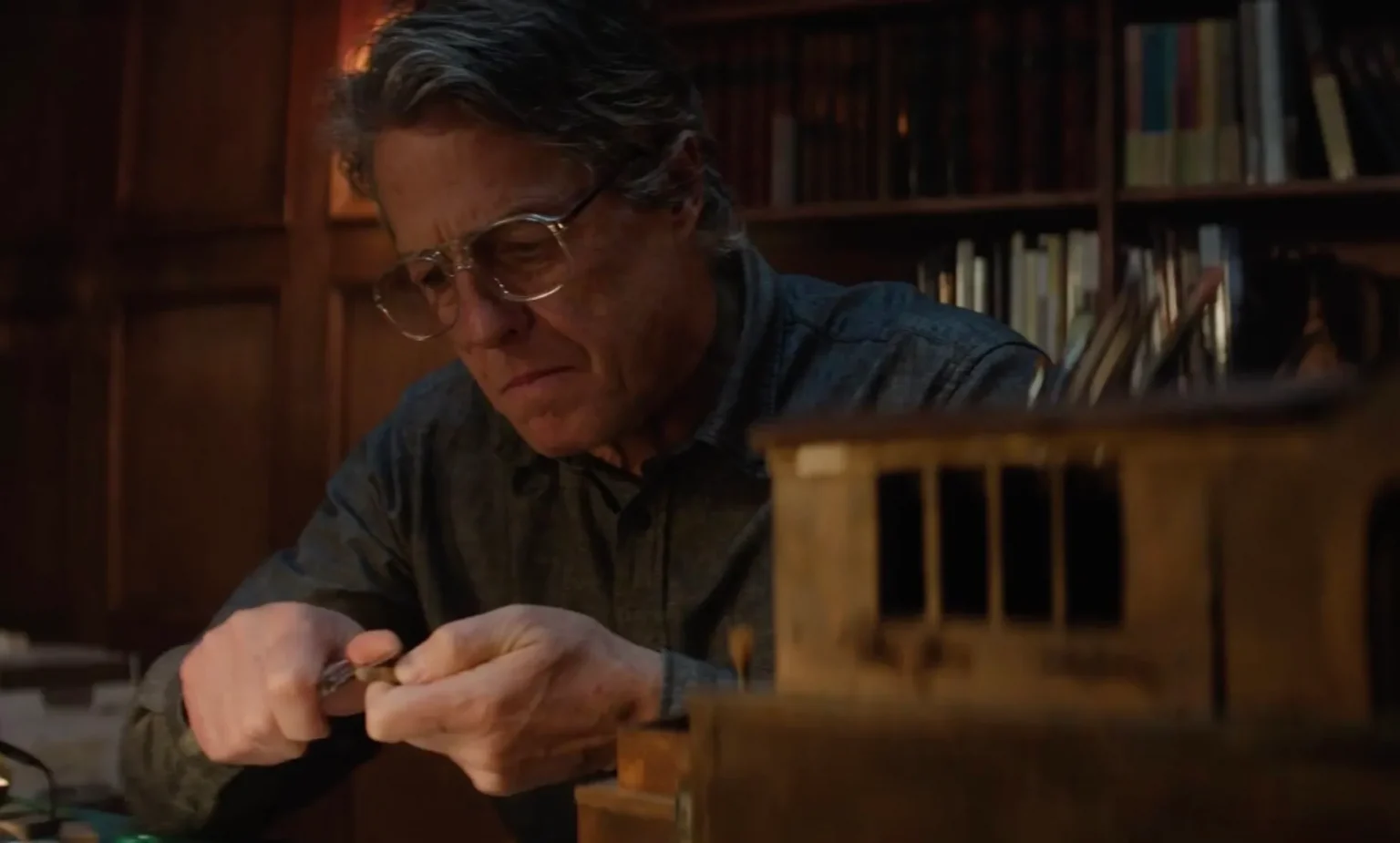
2. “HERETIC” (2024)
“Heretic – (Latin haereticus < Greek hairetikos – sectarian Plato (427-347 BCE)) – one who professes heresy; apostate, dissenter.” (Lithuanian Language Dictionary)
Heretic (in 2024’s film industry) – Hugh Grant, the go-to star of romantic comedies, aka the nameless heretic Mr. Reed in A24’s “Heretic”, where like a Marvel hero he tries to save the world from religion and convert good Samaritans to atheism. Or… does he?
Doubt, as in life, naturally finds its place in this film, since the religious theme (surprise surprise) presents two confronting sides. On one – deeply religious (or… are they?) Mormon women, on the other – a deeply non-believing (or… is he?) atheist.
Frankly, I expected the usual atheist logical resistance to religious doctrines from this film. And so it was. But I thought maybe this time the arguments would shake me and make my beliefs waver? Maybe the atheist side would say something new?
But there’s nothing new under the sun. Hugh Grant with his charming smile, jokes and good mood simply repeated the old, well-known tune of “religion is the opium of the masses”, while his opponents – two young Mormon women who appear at his home trying to bring the lost sheep back to the flock – sang another familiar tune: “no no no.” Neither side surprised me.
It’s worth noting this is a horror thriller. For half the film I doubted whether there’d be killings or if Hugh Grant would remain the gallant intellectual only concerned with philosophical quibbles. But blood and the cruelty typical of horror thrillers did appear, and more than once. And despite some completely implausible and absurd details (not in terms of reality but the screenplay’s realism), delivered with a straight face (fake it till you make it), this film still grabs attention.
Several factors contribute to this. First, the idea to write a horror screenplay about Mormons meeting an atheist trying to “sell” his belief system (without believing in God we believe God doesn’t exist) is simple yet brilliant. Of course, writers Scott Beck and Bryan Woods took risks broaching religion, but another element of their success – they didn’t offend anyone. Somehow they managed to navigate so that both belief and non-belief seem valid (though leaning slightly more toward belief, with some justifications why atheism isn’t bad either).
Another strength of this film is its dialogues and characters. The characters are clear and vivid, their differences interact and create good conflict. And yet it’s always interesting to hear arguments – why shouldn’t we believe in this religion? Why should we? Who’s lying and who’s telling the truth? Politics and religion – the two most fascinating topics that stir the strongest passions in people’s hearts.
A24 studio, known for horror films, has a penchant for religious, psychological themes. Other notable studio films with similar themes include “Dream Scenario” (2023), “Beau Is Afraid” (2023), “Midsommar” (2019) etc.
Directors and screenwriters Beck and Woods stated that “Heretic” was inspired by the 1997 sci-fi film “Contact” and the 1960 film “Inherit the Wind”, which seriously explore religious themes but in a way that “we could pop them like popcorn”, i.e., somewhat mischievously and lightly without overburdening with theological reasoning. This is palpable when watching – theological arguments definitely weren’t the main element. First and foremost, it’s entertainment for viewers, just slightly different and therefore even more interesting. (D. Ž.)

1. “BONES AND ALL” (2022)
An artistic, romantic, chilling horror film… no, not about vampires but cannibals who can’t help it – their instincts compel them to eat people. Yet this isn’t a typical horror meant to scare, as the filmmakers pose philosophical questions: Can human and monster natures coexist? Does love conquer all? What does loneliness do to us? The film premiered on September 2, 2022 at the Venice International Film Festival and later at many others. It won the Silver Lion for Best Direction by Luca Guadagnino, with critics praising the lead actors’ performances, cinematography and genre blending.
If you went to watch this film knowing nothing about it beforehand, you’d truly struggle to categorize it – is it romance, horror or road movie? In truth, it’s all at once. The story begins with Maren Yearly (Taylor Russell), who lives constantly on the run with her father because she’s a cannibal who can’t control herself. This is perfectly revealed in a scene where, while visiting a friend, she bites off her finger because, being so close, she smells her scent and is simply hungry.
This doesn’t mean Maren wants to behave this way. In fact, she’s tormented by conflicting feelings, condemning her actions and longing to be like everyone else, to live normally without eating people. Her father wants to believe this too but can’t cope and abandons his daughter when she turns eighteen, leaving her alone to grapple with her nature and search for answers.
With her father’s money, Maren sets off to find her mother. Having never spoken about her past before, he leaves her a tape explaining everything and her birth certificate – the only thread that might lead to her mother. The money barely lasts, and with no internet at the time, she relies on maps and asking locals for directions, not knowing what else to do or how to live.
Of course, it wouldn’t be much of a film if the universe didn’t help Maren or… harm her. Something has to happen. So the girl, thinking she’s alone in this world, meets other Eaters: first the strange loner Suliman or Sul (Mark Rylance), then young rebel Lee (Timothée Chalamet), whom she soon falls for and who helps her search for her mother. Lee’s life hasn’t been easy either, and the young pair bond over their shared difficult fate and, strange as it sounds when speaking of cannibals – morality. (D.Ž.)

